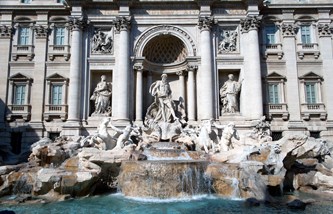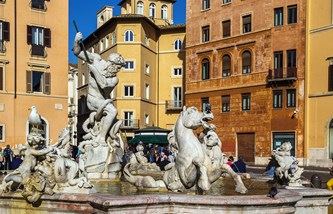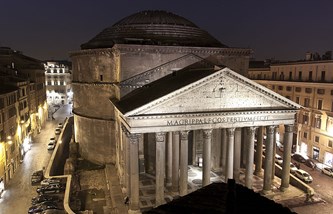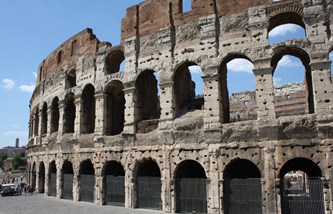Tours
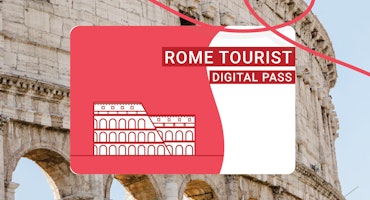
Rome Tourist Card
Rome Tourist Card
Snap up the Rome Tourist Card and you'll get everything you need to explore Rome's top highlights including Colosseum, Palatine Hill, Roman Forum and Hop on/off bus. You can even choose the order you see things in.
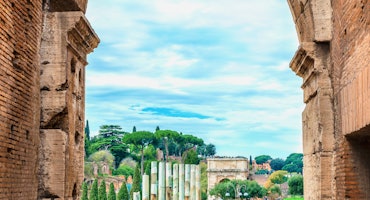
Colosseum, Roman Forum & Palatine Hill: Priority Entrance
Colosseum, Roman Forum & Palatine Hill: Priority Entrance
Skip the long lines at the Colosseum with this priority-entrance ticket. This ticket will let you bypass the crowds. And after exploring the Colosseum you can head to the area of the Roman Forum and the Palatine Hill.
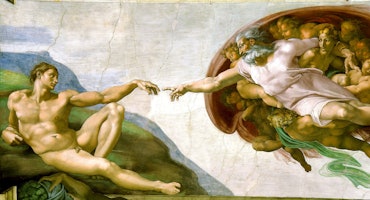
Vatican Museums & Sistine Chapel: Skip The Line
Vatican Museums & Sistine Chapel: Skip The Line
This ticket will make you save stress and time by allowing you to get priority entrance and skip the line. Visit the the countless masterpieces by Michelangelo, Raphael, Caravaggio, Tiziano and the Sistine chapel.
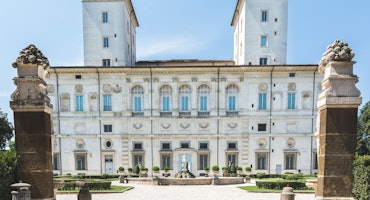
Borghese Gallery: Fast Track
Borghese Gallery: Fast Track
Galleria Borghese is located in the villa of the park Villa Borghese. Admire the architecture and furnishings of this beautiful villa. It is a museum full of art from the Renaissance. The collection includes several sculptures and paintings. Because of limited capacity get tickets for this museum weeks in advance.
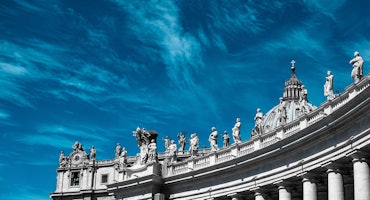
St. Peter’s Basilica: Dome Climb with Guide
St. Peter’s Basilica: Dome Climb with Guide
Get the most out of your visit to St. Peters with a guided tour to climb the basilica’s dome designed by Michelangelo and admire one of the stunning view. After the tour, you can explore the the basilica at your own pace.
Neptune Fountain
The Fountains of Rome are many, spread throughout the city and famous for providing fresh, drinkable water. Piazza Navona hosts some of the most imposing architectural landmarks of this nature, with three iconic fountains. The 16th-century Fountain of Neptune remains one of the most impressive, with different Italian artists throughout the centuries taking part in its history. Find out a little more about the beautiful Neptune Fountain in Rome!
Neptune’s Fountain History
Named Fontana del Nettuno in Italian, it is one of the three fountains of Piazza Navona Rome alongside the Fountain of the Four Rivers and the Fountain of the Moor. Neptune’s Fountain is located at the northern end of the square, and it’s arguably the newest of the three. Its basin was originally designed in 1574 by Renaissance artist Giacomo della Porta, under the sponsorship of Pope Gregory XIII. Back then, there was a city-wide project to recover some of the main aqueducts of Rome to provide water to the city, which led to a new era of fountains.
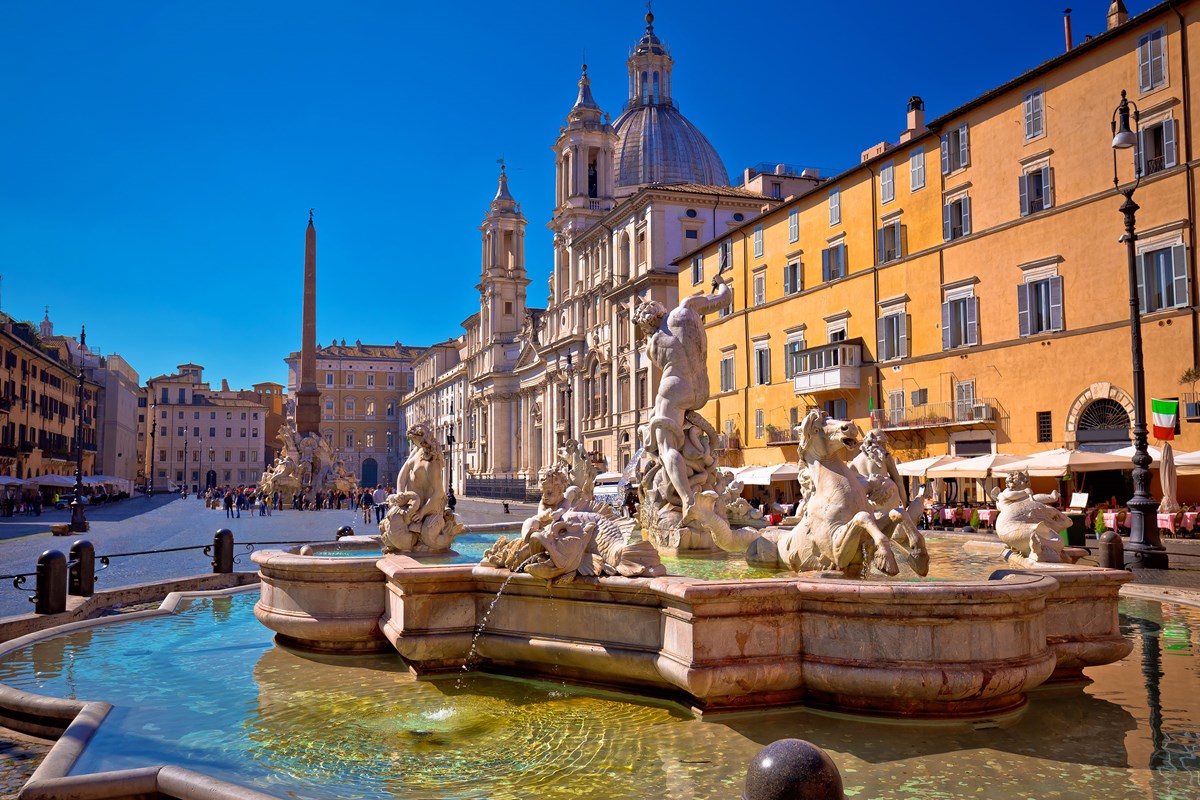
Originally, the Fountain of Neptune had no statues, just a basin with white marble and local marble stone from Pietrasanta, in the Tuscan province of Lucca. Back then, most public fountains went unadorned, and it was privately-owned gardens that featured statues with themes of mythology. That’s how it remained for over 300 years. In the 19th century, the city of Rome had something of an overhaul, as Italy went from a set of principalities to a modern country. Fountains were fashionable again, and the larger and more beautiful the better, as they served to adorn the capital of the new State of Italy!
As Piazza Navona already had massive fountains with statues in its southern end and center, authorities decided it was time to balance things out. Harmonizing the piazza’s fountains became a priority and two artists won a competition to complete this task: Antonio della Bitta and Gregorio Zappalà. Della Bitta created the “Neptune fighting with an octopus” statue, while Zappalà was in charge of the “Nereids with cupids and horses” section. The statuary was added atop the fountain in 1873,
While these are both beautiful and original designs, there’s definitely a homage to Gian Lorenzo Bernini’s Moor Fountain across the piazza. Now, you can see the imposing statues with mythological themes across the square!
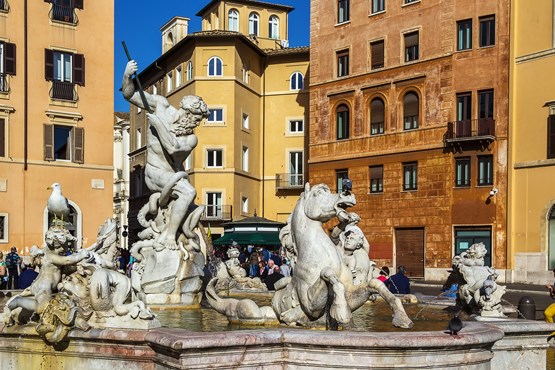
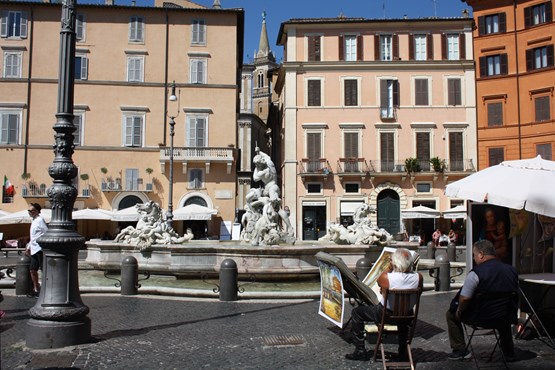
More on Piazza Navona
Piazza Navona is one of the most famous squares of Rome, and a must for first-time and returning visitors. Here are some of the main attractions in the piazza and its surroundings!
• Fountain of the Four Rivers. A Bernini masterpiece, this 17th-century fountain is one of the most famous examples of Italian Baroque architecture. It stands at the center of the piazza and it represents the main rivers of four different continents: the Ganges in Asia, the Nile in Africa, the Río de la Plata in the Americas and the Danube in Europe.
• Moor Fountain. A work created in two different centuries, first by Della Porta and later by Bernini, it also depicts wrestling with the seas. It stands at the southern end of Piazza Navone.
• Sant’Agnese in Agone. Standing at the place where Saint Agnes was martyred in the early centuries of Christianity, it’s a beautiful basilica next to Palazzo Pamphili.
• Palazzo Braschi. Now housing the Museo di Roma, it’s a beautiful 18th century palace filled with donations mostly showcasing Italian art.
How to Get to the Fountain of Neptune
Find out how to get to Piazza Navona, home to Neptune’s Fountain, below:
• Metro. Piazza Navona isn’t directly served by any metro stations. The closest station is Spagna on Line A, about 1.2 km away, so you’ll have to walk for a bit.
• Bus. There are plenty of bus lines that will take you there. Some include the no. 87 (which you can take outside the Line B Colosseo station), no. 70 (from Termini, Line A or Line B) and no. 492 (from Piazza Barberini, Line A).
Essential Fontana del Nettuno Info
• Address. Piazza Navona, 00186 (Navona Square).
• Schedule. The piazza is open 24/7, and you’re welcome to see Neptune’s Fountain at different times of the day and night. The view can vary greatly depending on the natural and artificial light!
